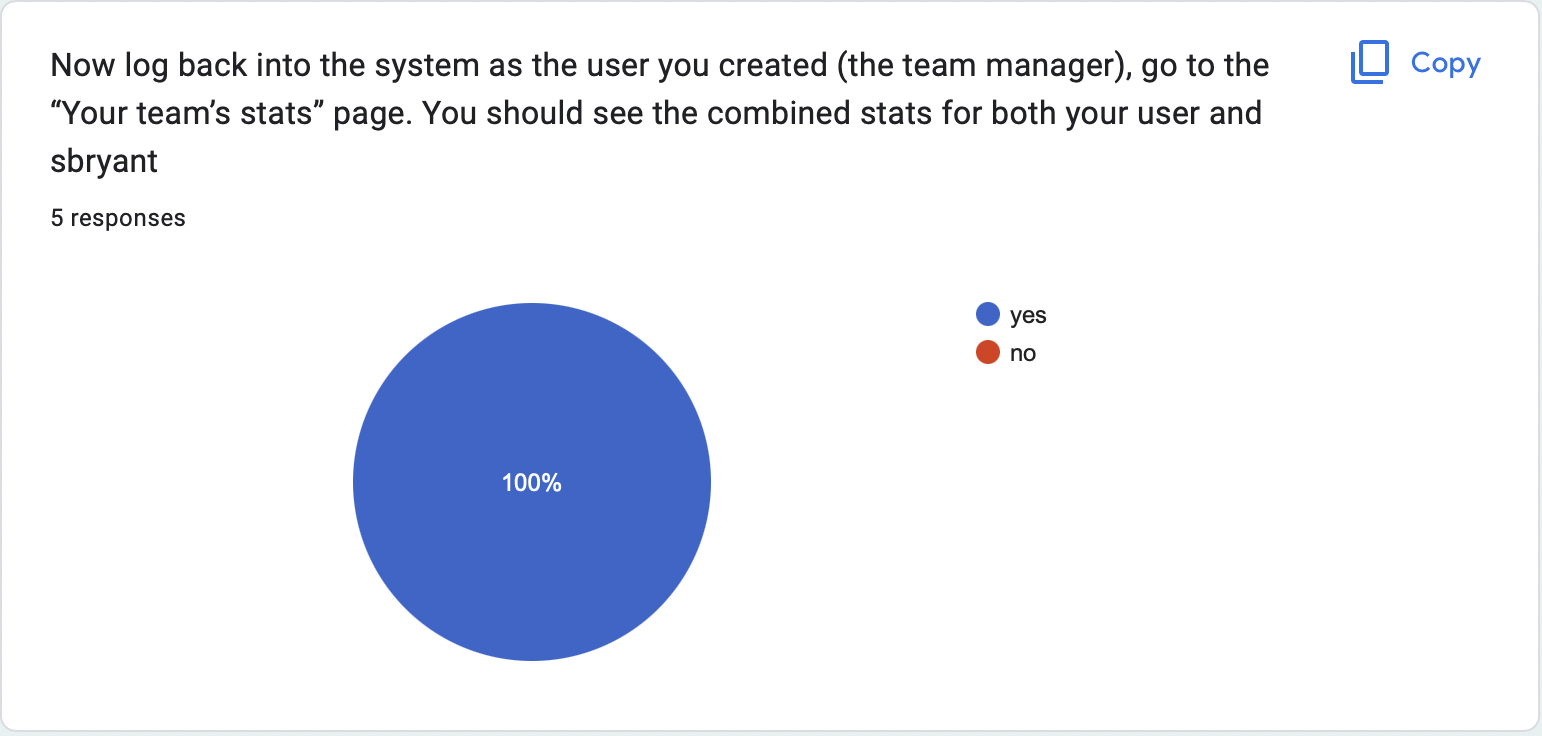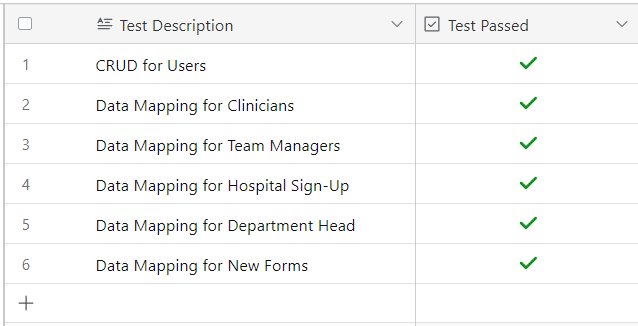Example of Selenium End-to-End testing
We will show an example of how one of our tests look like to give a
quick breakdown of it.
TestLogIn class: This class inherits from unittest.TestCase and
contains methods to set up, test, and tear down the login process.
This is the file that is run to test our application.
class TestLogIn(unittest.TestCase):
def setUp(self):
self.driver = webdriver.Chrome()
self.driver.get("https://adela734.softr.app")
def test_log_in(self):
WelcomePage = page.WelcomePage(self.driver)
WelcomePage.click_sign_in()
password = os.getenv("PASSWORD")
email = os.getenv("EMAIL")
LoginPage = page.LoginPage(self.driver)
LoginPage.email_element = email
LoginPage.password_element = password
LoginPage.click_sign_in()
main_page = page.MainPage(self.driver)
assert main_page.open_stats_page(), "Stats page does not open after signing in."
def tearDown(self):
self.driver.quit()
-
setUp method: Initializes the WebDriver, in this case, Chrome, and
opens the target website.
-
test_log_in method: Defines the actual test, which includes clicking
the sign-in button, entering email and password, and verifying that
the main page opens after a successful login.
-
tearDown method: Closes the WebDriver after the test is complete.
class ClickableElement(object):
def __init__(self, locator):
self.locator = locator
def __set__(self, obj, value):
driver = obj.driver
WebDriverWait(driver, 10).until(EC.element_to_be_clickable(self.locator))
element = driver.find_element(*self.locator)
element.click()
def __get__(self, obj, owner):
driver = obj.driver
WebDriverWait(driver, 10).until(EC.element_to_be_clickable(self.locator))
element = driver.find_element(*self.locator)
return element
The `ClickableElement` class is a descriptor class for managing
clickable elements in a Selenium WebDriver test. It defines the
__init__, __set__, and __get__ methods, which are used to create and
manipulate instances of this class.
-
__init__ method: Initializes the instance with a locator tuple, used
to find the element on the web page.
-
__set__ method: Waits for the element to be clickable, finds the
element using the locator, and clicks on it.
-
__get__ method: Waits for the element to be clickable, finds the
element using the locator, and returns the element.
class WelcomePageLocators(object):
"""A class for welcome page locators. All welcome page locators should come here"""
# /html/body/div[1]/nav/div/div[1]/ul/li/a
SIGN_IN = (By.XPATH, "/html/body/div[1]/nav/div/div[1]/ul/li/a")
# /html/body/div[1]/header/div/div/div[1]/div/a[2]
SIGN_UP = (By.XPATH, "/html/body/div[1]/header/div/div/div[1]/div/a[2]")
The WelcomePageLocators class contains locators for the welcome page
elements. This class makes it easy to manage and update locators in a
centralized location.
-
SIGN_IN: A locator tuple for the "Sign In" button on the welcome
page, using the XPath method to find the element.
-
SIGN_UP: A locator tuple for the "Sign Up" button on the welcome
page, also using the XPath method to find the element.
class WelcomePage(BasePage):
"""Welcome page action methods come here."""
sign_up_element = ClickableElement(WelcomePageLocators.SIGN_UP)
sign_in_element = ClickableElement(WelcomePageLocators.SIGN_IN)
def click_sign_up(self):
element = self.sign_up_element
element.click()
def click_sign_in(self):
element = self.sign_in_element
element.click()
-
sign_up_element: Represents the "Sign Up" button on the welcome
page, using the `ClickableElement` class with the
`WelcomePageLocators.SIGN_UP` locator.
-
sign_in_element: Represents the "Sign In" button on the welcome
page, using the `ClickableElement` class with the
`WelcomePageLocators.SIGN_IN` locator.
-
click_sign_up and click_sign_in methods: Define actions to click the
respective buttons on the welcome page using the `ClickableElement`
instances.
In summary, the TestLogIn class and its methods rely on the
interdependence of the various classes we've discussed. The TestLogIn
class leverages the WelcomePage and LoginPage classes, which in turn
inherit from the BasePage class. These classes utilize elements,
locators, and custom descriptors like ClickableElement to define the
behavior of elements and actions on the web pages.
The TestLogIn class serves as a starting point for the test execution.
The setUp method initializes the web driver and opens the target
website. The test_log_in method uses the WelcomePage and LoginPage
classes to interact with the web elements, perform actions like
clicking buttons, and entering login credentials. Finally, the
tearDown method closes the web driver when the test is complete.
This is just one example of a Selenium end-to-end test for our system.
There are many other tests covering various user flows and
functionalities. These tests help to ensure that the application
behaves as expected and provides a consistent user experience. By
utilizing Selenium and Python, we can create a comprehensive suite of
automated tests to validate the functionality and usability of our web
application.


